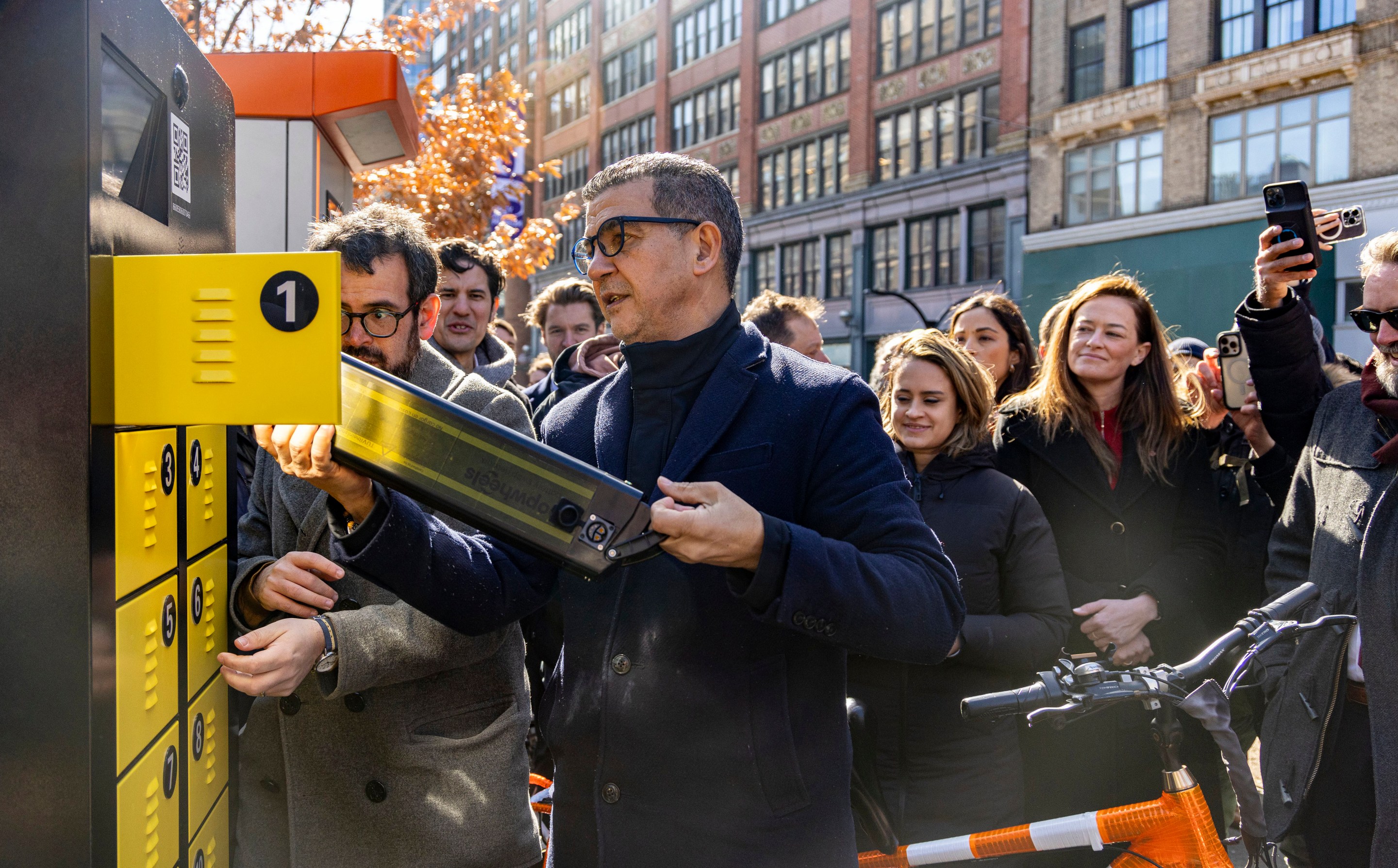There's a lot of good news in the Department of Transportation's announcement on Thursday that its lithium-ion battery swap pilot program is working exactly as we said it would.
The agency announced that five months into the six-month program, 84 percent of the 120 pilot participants who were previously charging their e-bike batteries at home are now charging them at one of five existing battery swap stations. And about half of the participants have stopped charging batteries at home, where neighbors could be at risk if fires break out.
After the pilot ends, the DOT will present a much fuller report, but that raises some questions: Will the existing charging hubs be allowed to remain in place after the six-month pilot ends, or will participants have to return their safe, swappable batteries and go back to their possibly lethal ones?
I swear to you, I asked this question six different ways to DOT, but never got a clear answer. The good news, according to agency spokesman Vin Barone is that the pilot will inform subsequent DOT efforts to expand safe and affordable e-battery charging across the city.
Indeed, the pilot has already led to a DOT effort to allow property owners to install charging infrastructure at their properties. But what happens in late August when the pilot ends? Will the three companies involved — Swobbee, Swiftmile and Popwheels — have to remove their stations at Cooper Square, Essex Market, and Willoughby Street in Manhattan, and the Army Terminal and Willoughby Street in Brooklyn, forcing existing pilot participants to go back to the old dangerous way of charging? We simply don't know.
More on this story as it develops.
In other news from an oddly slow day:
- A new rail link between New Jersey and New York? Believe it. (NYDN)
- Carnage in Long Island. (NY Post)
- Yes, bus fare evasion is an issue, but not the one the MTA thinks. (amNY)
- Memo to NYPD: Don't bash immigrant vendors. (Hell Gate)
- Finally, we reached out to the Secret Service with a rasher of questions about the incident involving a Tribeca man and his alleged "vandalizing" of two SUVs with covered plates, but the agency did not respond (hence its name). We asked:
- What type of covering did the Secret Service vehicles in question have on their license plates?
- What kind of license plates were these (NYS, another state, federal, etc?).
- Is it standard practice for unmarked Secret Service vehicles to use plate covers, which are illegal in NYS? If so, why is this standard practice? If not, why were there plate covers on those vehicles?






